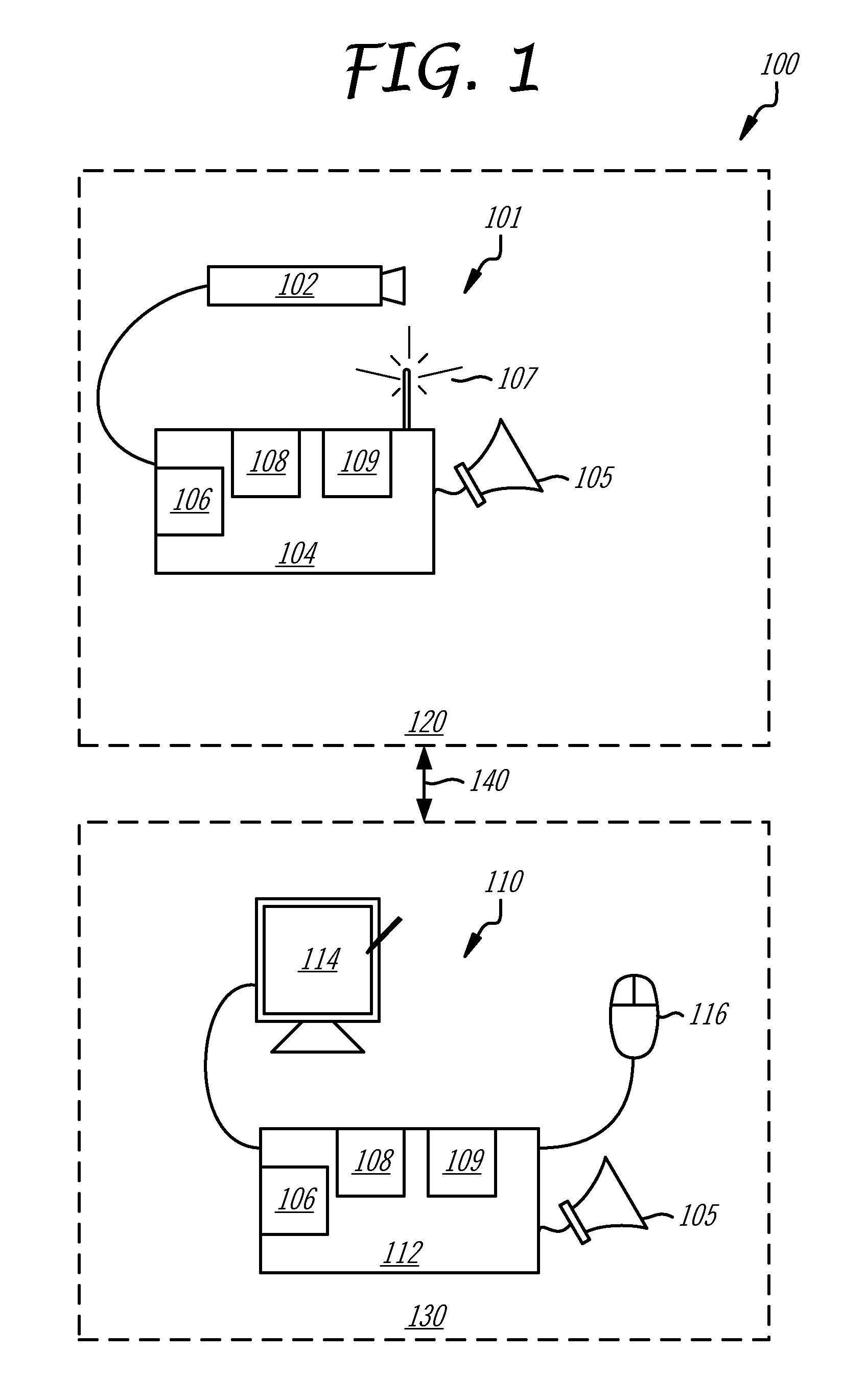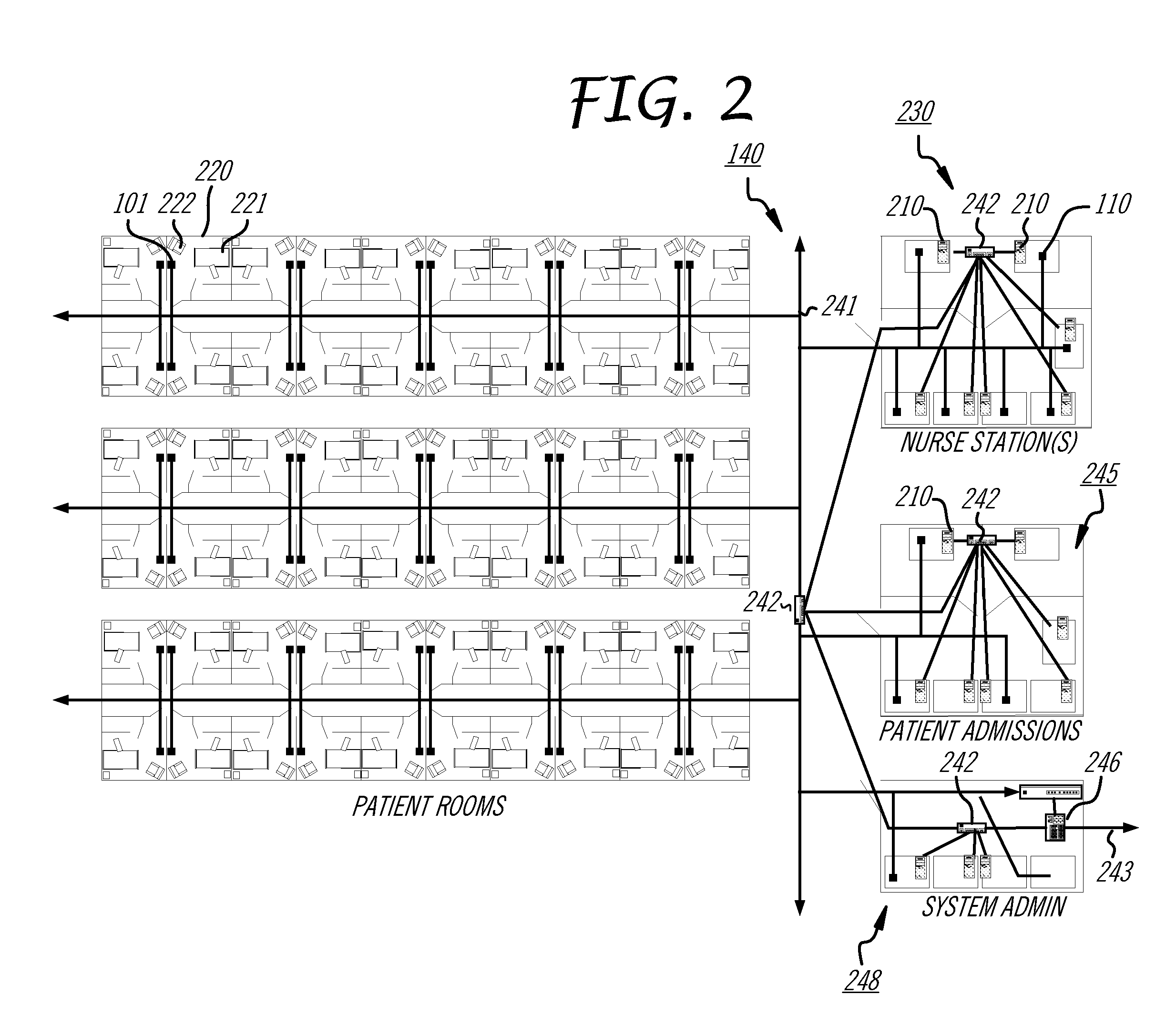Noise correcting patient fall risk state system and method for predicting patient falls
a patient and state system technology, applied in the field of patient monitors, can solve problems such as the system entering an elevated fall risk state, and achieve the effect of reducing the chance of noise impa
- Summary
- Abstract
- Description
- Claims
- Application Information
AI Technical Summary
Benefits of technology
Problems solved by technology
Method used
Image
Examples
Embodiment Construction
[0038]
Element Reference Number Designations100: Patient monitoring system101: Patient monitoring device102: Video camera104: Camera control device105: Audible alarm106: Processor107: Receiver / interrogator108: Memory (RAM and ROM)109: Video processor110: Nurse monitor device112: Computer (PC, laptop, net device)114: Display (touch-screen)116: User interface device (mouse)140: Distribution network210: PC220: Patient room221: Bed222: Chair230: Care (Nurse) station241: Transmission medium242: Network switch243: Broadband connection245: Patient administration246: Network server / router / firewall300: Video frame900: Patient902: Front patient view904: Side patient view910: 1st Half torso912: 1st Half torso inner rail (left)914: 1st Half torso mid rail (left)916: 1st Half torso outer rail (left)922: 1st Half torso inner rail (right)924: 1st Half torso mid rail (right)926: 1st Half torso outer rail (right)950: 2nd Torso half952: 2nd Half torso inner rail (left)954: 2nd Half torso mid rail (lef...
PUM
 Login to View More
Login to View More Abstract
Description
Claims
Application Information
 Login to View More
Login to View More - R&D
- Intellectual Property
- Life Sciences
- Materials
- Tech Scout
- Unparalleled Data Quality
- Higher Quality Content
- 60% Fewer Hallucinations
Browse by: Latest US Patents, China's latest patents, Technical Efficacy Thesaurus, Application Domain, Technology Topic, Popular Technical Reports.
© 2025 PatSnap. All rights reserved.Legal|Privacy policy|Modern Slavery Act Transparency Statement|Sitemap|About US| Contact US: help@patsnap.com



